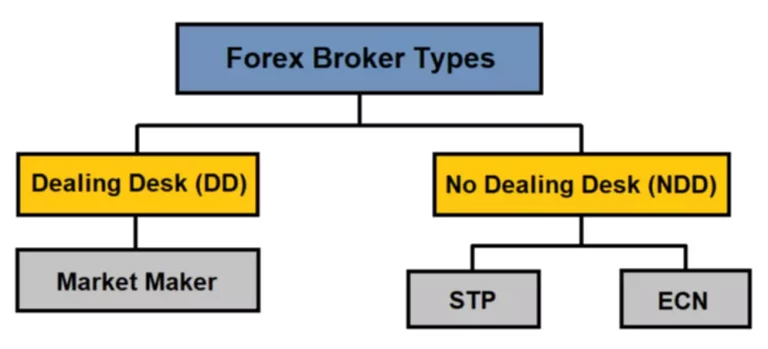Content
For example, decentralised applications (DApps), decentralised finance (DeFi), NFTs (non-fungible tokens), as well as blockchain-based lending and gaming. These unique capabilities have made Ethereum a truly versatile platform, enabling developers to utilise blockchain infrastructure to create their own projects — something that cannot be done with Bitcoin. While the BTC vs ETH debate often portrays bitcoin and ether as competition, they have different features https://www.xcritical.com/ and purposes. As we have seen above, bitcoin is designed to act as a global digital currency, or digital gold, while ether powers the Ethereum dApp development platform.

Introduction to Bitcoin and Ethereum
Bitcoin uses Proof of Work (PoW) — a process where miners solve complex mathematical problems to confirm transactions and add new blocks to the blockchain. This requires significant computational power and large amounts of energy. Bitcoin cash is a standalone digital currency, created as an offshoot of bitcoin in August 2017 by a ‘hard fork’. This was in blockchain vs ethereum response to the slowdown in bitcoin transaction speeds and the network’s inability to reach consensus on proposed upgrades. Bitcoin cash’s maximum block size is 8mb, compared to 1mb for bitcoin, enabling it to process more transactions each second.
XRP Wallets: How to create and set up an XRP wallet
- But the next price spike happened in 2017 when Bitcoin started to rise more and more until it reached $19,000 in 2018.
- Its underlying technology, blockchain, has paved the way for the development of numerous other cryptocurrencies and digital assets, establishing Bitcoin as the cornerstone of the modern cryptocurrency industry.
- ETH has consistently held the second spot in the market capitalisation ranking for many years.
- Ethereum also differs by serving as a building platform for dApps / smart contracts, which allow it to send tokens that represent values.
- It is not known if this is a person or group of people, or if the person or people are alive or dead.
- For this reason, Ethereum 2.0 was announced and built as the scalable version of Ethereum.
This robust security model has been instrumental in establishing Bitcoin as one of the most reliable and trustless decentralized systems. Since its launch, Ethereum has undergone several upgrades to improve its scalability, security, and functionality. These include the transition Decentralized finance from a Proof-of-Work to a Proof-of-Stake consensus mechanism in its ongoing development roadmap. Ethereum’s development was officially announced in January 2014, with Buterin along with other co-founders, including Gavin Wood, Charles Hoskinson, Anthony Di Iorio, and Joseph Lubin.

What Are Some Similarities Between Bitcoin And Ether?
The native token of Bitcoin has the same name and is shown with the symbol of BTC, which is created through the mining process. But, unlike other cryptocurrencies, Bitcoin can be divided into different parts. The miners usually don’t mine a bitcoin through one process, and each time a small denomination of this coin is mined; it is called Satoshi and is equal to a hundred millionth of one Bitcoin.
This adaptability comes at the expense of scalability, as the EVM’s computing demands are higher than Bitcoin’s more straightforward protocol. Based on the Proof-of-Work (PoW) consensus method, Bitcoin’s protocol stresses security and immutability, making it ideal for storing and transferring value. This system facilitates smart contracts – self-executing code-based agreements – enabling the development of decentralized applications (DApps), which operate independently of a central entity. These smart contracts are programmed in Ethereum’s own language, Solidity, opening a wide range of potential applications, such as decentralized financial services and non-fungible tokens (NFTs). Ethereum wasn’t designed and isn’t used for the same purposes as Bitcoin. Bitcoin mining, based on the Proof-of-Work (PoW) mechanism, requires significant computational effort and energy to validate transactions and secure the network.
Recent applications allow users on the Ethereum blockchain to trade BTC derivatives, or even earn interest on their BTC holdings. Bitcoin and Ethereum have long been unchallenged as the top two blockchain networks. Their early success is undeniable, but what truly sets them apart is their groundbreaking and contrasting technologies.
NerdWallet, Inc. does not offer advisory or brokerage services, nor does it recommend or advise investors to buy or sell particular stocks, securities or other investments. We all know that when we conduct a transaction through a bank, some amount of money or service charge is levied. However, with Bitcoin, this charge is very low, making it a more attractive alternative to conventional electronic transactions.
Bitcoin operates on a Proof-of-Work (PoW) consensus mechanism, a foundational aspect of its blockchain network. BTC and ETH are both the native assets (coins) on their respective blockchains and serve primary roles in users’ experience on the chains. For those intrigued by Ethereum’s capabilities and future, staking ETH is a practical way to engage with and support the network. Figment provides a secure, straightforward platform for Ethereum staking, allowing users to earn rewards while contributing to Ethereum’s growth and security.
Bitcoin, while secure and robust, lacks this flexibility and is primarily used for transactions and to store value. Ethereum has gained significant traction in recent years, solidifying its position as the second-largest cryptocurrency by market capitalization. Its performance has been driven by the rise of decentralized finance (DeFi) applications and the increasing demand for blockchain-based solutions. Being the pioneer in cryptocurrency, Bitcoin holds the largest market capitalization and has enjoyed substantial growth over the years. Both cryptocurrencies’ price movements and market dynamics reflect their unique characteristics and evolving investor sentiment. One of Ethereum’s key features is smart contracts — self-executing contracts with automatic execution of conditions coded into the contract.
Ethereum and Bitcoin, as leading cryptocurrencies, differ in their technologies, transaction speeds, fees, performance, and future potential. Ethereum’s focus on smart contracts and decentralized applications positions it as a versatile platform with significant growth potential. Bitcoin’s recognition as the original cryptocurrency and its store of value narrative has solidified its position as a trusted digital asset. Understanding the unique characteristics and trade-offs of Ethereum and Bitcoin enables investors and users to make informed decisions based on their risk tolerance, needs, and financial goals. The ongoing comparison between Ethereum and Bitcoin continues to engage investors and the wider cryptocurrency community, showcasing the varied potentials and applications of blockchain technology. Bitcoin, as the pioneering decentralized digital currency, laid the groundwork for this new financial paradigm.
But one thing is certain—both have induced much-needed discussions about financial systems worldwide. At one point, more and more miners appeared to have focused on Ethereum for all of their mining wants and needs. Admittedly, it was much easier to mine Ether, and as the popularity of this crypto asset grew, it was only natural that there was also an increase of attention towards its “extraction” processes, too. As of late, though, Ethereum has undergone its “ETH 2.0” merge-update, and has transitioned to Proof-of-Stake – in other words, it can no longer be mined. In Ethereum VS Bitcoin battle, if I had to choose one, it’d be Ethereum! This is because it has unlimited use cases, whereas Bitcoin only tackles payment and banking issues.
Generally, users pay the base gas fee — the minimum price — or they set a gas limit (the most they are willing to pay to have the transaction processed). In 2022, Ethereum moved to the Proof of Stake (PoS) consensus mechanism through The Merge upgrade. In the PoS system, a group of participating validators are randomly chosen to validate transactions, verifying them if they reach a consensus (the process known as ‘staking’). The PoS system is faster and requires less computer processing power than PoW, though it is still memory-intensive.
For these reasons, Bitcoin is often referred to as ‘Gold 2.0’ or ‘digital gold’. Ethereum, on the other hand, was developed as a versatile platform supporting not only a digital currency but also smart contracts and dApps. Overall, Bitcoin focuses on being a digital currency and store of value, while Ethereum provides a robust platform for creating and executing transactions that facilitate the movement of value.

